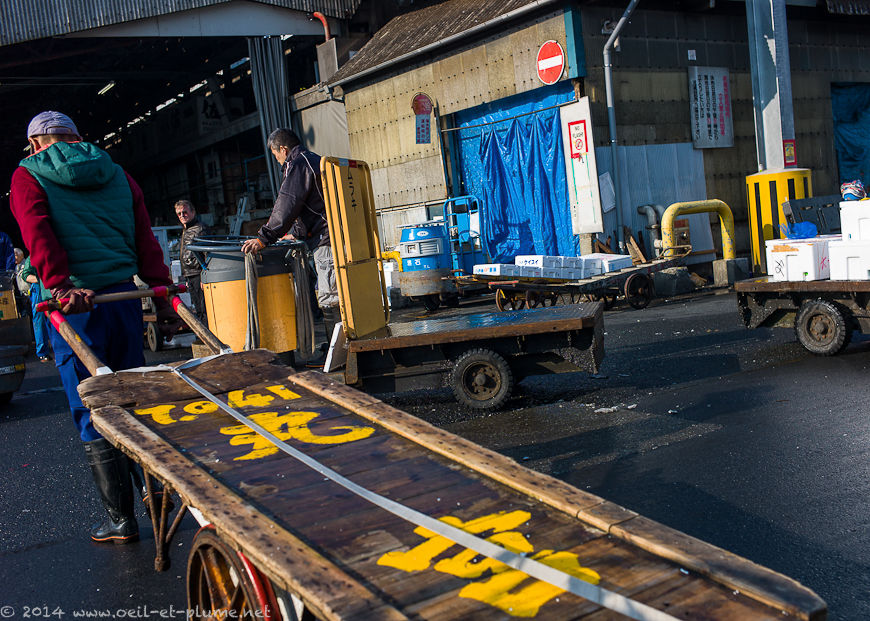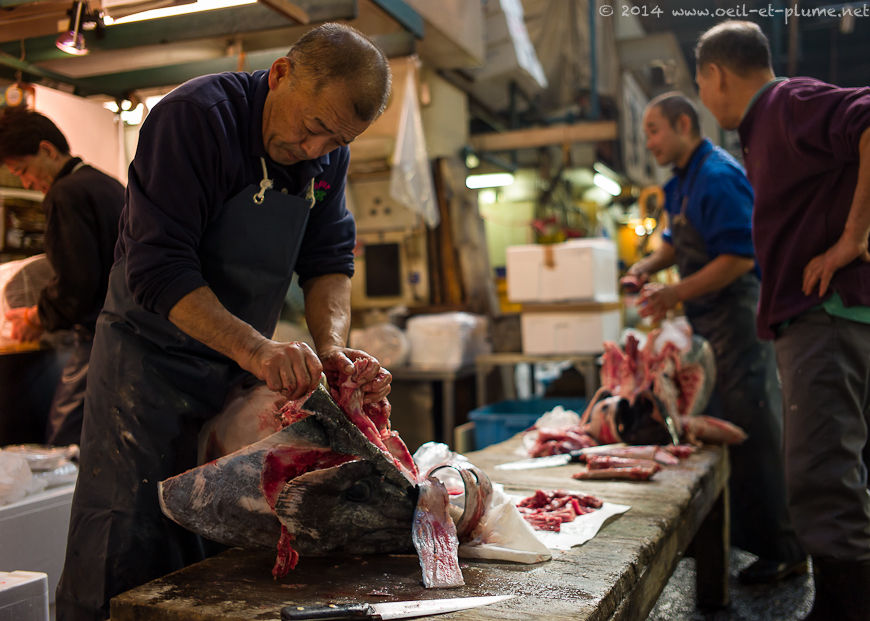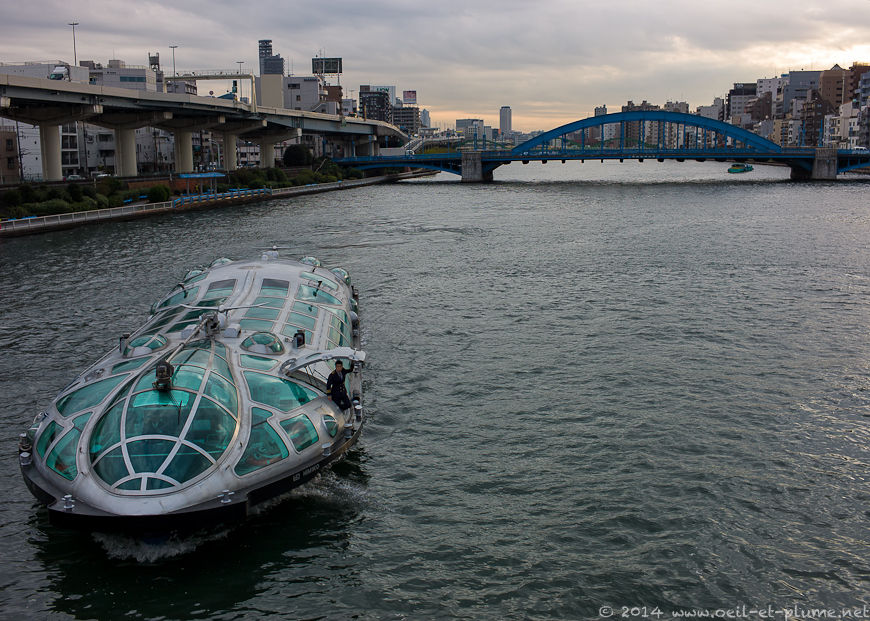Everyday Tokyo stands in water. With its mother Edo town born on an estuary located in the mouth of the Sumida River, Tokyo nurtures this organic link with fresh and sea water. Even the dense and busy central Tokyo hides water oasis run by outdated but perennial life rhythms.

Tsukiji Fish Market
In other places, Tokyo applies more contemporary rhythms to its relation with water. Tsukiji Fish Market is one of the three seafood wholesale markets in Tokyo. World’s biggest of its kind, it processes an astonishing 2,400 tonnes of seafood daily. Built in 1935, the huge Tsukiji Fish Market is an architectural oddity in central Tokyo. At peak hours, it resembles a bee colony. Dozens of handcarts, electric trolleys and forklifts crisscross the inner market and its surroundings in a frantic choreography.



The inner market evokes a glow-free and busy cathedral celebrating seafood. It prevails a rather shady ambiance. Natural light is scarce, as it is a declared enemy of coolness and freshness. Ugly neon lights illuminate here and there the food hot spots. People move and interact with much containment as seafood would be too serious a matter to dare talking loud, joking, laughing and rejoicing.



Amongst the hundreds of seafood species sold there, the maguro (bluefin tuna) is the star. Auctions of fresh frozen tuna are run at dawn – with licensed sellers and buyers as standing characters, and small-scale public audience. Out of safety, sanitation and convenience concerns, visitors were banned from the fresh tuna auctions at times in recent years. Nowadays, only 120 visitors are allowed daily.
Amongst the hundreds of seafood species sold there, the maguro (bluefin tuna) is the star. Auctions of fresh frozen tuna are run at dawn – with licensed sellers and buyers as standing characters, and small-scale public audience. Out of safety, sanitation and convenience concerns, visitors were banned from the fresh tuna auctions at times in recent years. Nowadays, only 120 visitors are allowed daily.
I do not feel early bird and tuna-fan enough to wake up at 4:00 am for having a chance to attend the fresh tuna auction. Arrived at 7:00 am, I find some leftovers of the sales are now available on retail. That is more than enough for me.



Across the retail alleys, the sea displays a large variety of its food resources. My eye is constantly on the move, attracted and distracted by countless different forms and colours manufactured by the Nature and post-processed by the hungry and greedy mankind.




The Tsukiji Fish Market faces an uncertain future, as its centric location in Tokyo fuels town-planning issues as well as the appetite of the real estate market. Even relocated, Tokyo’s main wholesale fish market will continue paying tribute to fresh and sea water.

Yanaka
Everyday Tokyo is to be found indeed in the numerous neighbourhoods of the metropolis. In my long urban trekking, I look for the peculiar and the unexpected more than the typical, for the revealing more than the commonplace, for the aesthetic more than the shiny.
Yanaka neighbourhood fits particularly my approach. Nowhere in Tokyo I have found such a delicate spatial order and attention paid to details, such subtle balance between old and new, such interconnectivity between material and spiritual life.




Yanaka exquisitely fuses Tokyo’s traditional and modern habitat. The neighbourhood blends the secular and religious component of the everyday life of Tokyoites. Wooden houses stand firm on street corners or hide in humble side alleys. Spatial constraints are superbly mastered, with micro-gardens accommodated in impossible venues. Shinto shrines are plentiful, fully integrated into residential areas. Located in mansions courtyards or in public spaces, Shinto gardens open delicate venues for little walk and meditation.




Ueno-koen
Ueno-koen hosts the prestigious Tokyo National Museum, which attracts flocks of visitors daily. Main public park in Tokyo, it provides also abundant venues for ample strolls into green areas hosting a variety of religious and secular monuments. Tokyoites families, joggers, students as well as tourists scatter throughout the park all day long. Crowds gather for acrobats’ or buskers’ performances or in front of food stalls.
Looking for more intimate ambiances, I head to Shinobazu Pond at the southern end of the park. On my way, a group of retired Tokyoites is happy to contribute voluntarily to the public park’s cleanliness. Where else on earth to witness this?


Shinobazu Pond place is much praised by lovers and couples for its many nice viewpoints and discrete venues. It attracts also many landscape painters. In spring, the place is a must to admire cherry-blossom. In autumn, the pond surroundings display the colourful swan song of the Nature before the winter.
A very romantic place indeed in everyday Tokyo; a beautiful place that the megalopolis is keen to preserve.
Cheers,